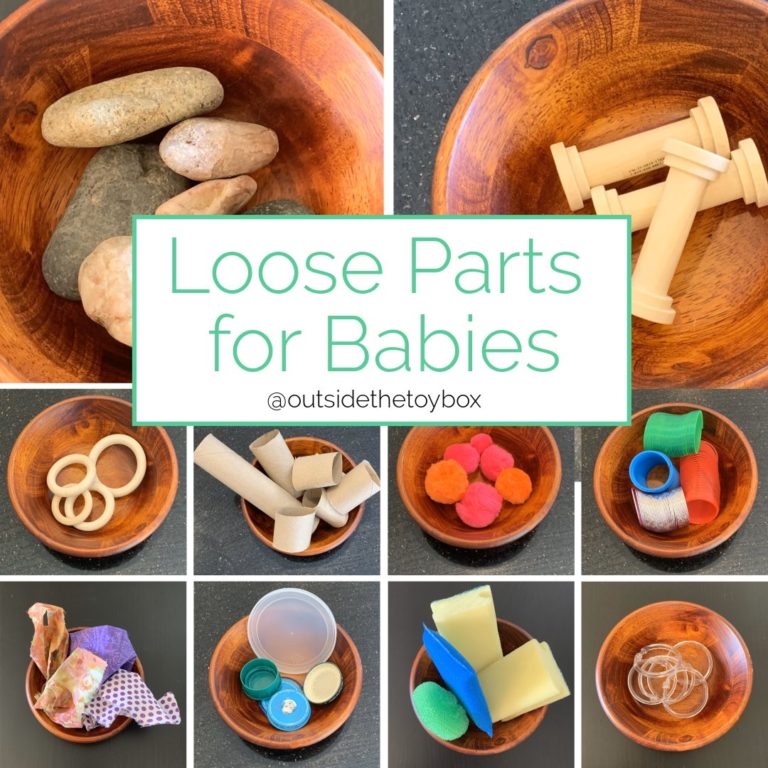
This post may contain affiliate links, which I receive a commission from qualifying purchases. Please check out our disclosure policy for more details.
What are loose parts?
When you search the internet for loose parts you often come across a variety of tiny pebbles, gems, and nature items displayed for play among preschoolers. Those items would not be safe to give babies and are not the definition of loose parts.
Basically, loose parts are any object that has open-ended potential. Any item you can find that can be used in multiple ways and has interesting texture, smell, shape, color, or other properties can be used as loose parts.
Open-ended toys or loose parts do not have one fixed purpose or intent. For example, a person figurine is just that, but a stick can be a person, animal, bridge, flag pole, pencil, etc. They can also be used in a variety of ways and activities.
Loose parts for babies and toddlers should be larger in size so they do not choke when they naturally mouth the items. These items spark curiosity, wonder, and experimentation in the young child. Babies and toddlers experiment with the world around them through their senses and, thus, loose parts for babies and toddlers should be able to be mouthed, shaken, banged, hit, rolled, dropped, and transferred.
Why use loose parts?
If you read my post “What’s the Deal with Sensory Play,” then you probably understand that babies and toddlers learn about the world around them through exploration with their senses. That means they explore items that give them rich experiences with taste, touch, smell, sound, and sight.
Loose parts provide the perfect opportunity to experiment and research the potential of the world. Loose parts are open-ended, thus are ideal for infant and toddler experimentation. There are endless possibilities.
Because of the open-ended nature of loose parts they can be used with varying ages at their own skill and developmental level. Infants will explore an object by mouthing, shaking, banging, and touching, while a toddler loves to use the same object to fill and dump containers and move them from one location to another. This makes loose parts a great investment to withstand the test of time and extend your dollar a little farther.
You may not even have to spend a lot of money on loose parts. Many household items or recyclables can be used as loose parts for babies and toddlers. Check out my post “Household Objects as Toys” to get some ideas on unconventional toys or loose parts.
How loose parts promote learning and development
Because of the open-ended nature of loose parts, they provide the ideal vehicle for experimentation and exploration. Infants and toddlers are natural researchers, so when we provide them with these materials and let them free they will learn skills valuable for them beyond school academics. Such skills include:
Independence
Imagination
Experimentation
Problem solving
Critical thinking skills
Understanding the world
Sensory integration
These life-skills are crucial in our constantly changing and innovating modern world. The world we live in now and the world of the future will require life skills much more than book smarts. Learning with loose parts also includes learning in the various domains. The following are some examples of learning that may occur with loose parts play.
Social Emotional
Self-awareness: As the infant explores the world with their senses and through movement, they are learning about their body, abilities, feelings, and limits. They learn I can shake fast/slow, I can reach, that hurts when I touch it, I like the feel of that, etc.
Self-regulation: When you see a very young infant you see they do not have much self-regulation by the way they flap and have sporadic leg and arm movements. As the infant gets older they become more regulated and intentional with their movements. With loose parts they begin to understand how to regulate their body further to accomplish a specific task. They also gain control of their attention. They focus on putting this lid inside a container without distracting their attention to something else, for example.
Self-esteem: Infants and toddlers begin to feel a sense of self-efficacy when they can see their efforts or their work matter and create a result that is interesting or in which they feel pride. Loose parts provide numerous opportunities for cause and effect, which allow young children to see the effects of their play and increase their self-esteem.
Social development: When babies use household items they imitate the adults around them. Imitation is a form of social development. They see you using a cup, pan, spoon, etc. and they also want to use and explore the object. Feeling that connection is the beginning of social development for babies.

Loose parts and social development
Infants and toddlers gain self-awareness, self-regulation, and self-esteem when they focus on an activity and see that their efforts create a result.
Motor Development
Fine motor: These are the small muscles needed for eating, drawing, and writing. So many opportunities to increase fine motor strength and coordination with loose parts.
Gross motor: These are the large muscle movements in our body. Loose parts help develop balance, crawling, reaching, standing, sitting, bilateral coordination (using both sides of body), and many more gross motor skills in babies and toddlers.
Body Awareness: Babies and toddlers begin to understand how their body works and what they are capable of through open-ended play with loose parts.
Spatial Awareness: Babies and toddlers also learn where they are in relation to space as well as how objects are related in relation to space. Have you ever see a baby or toddler crawl or walk right into something? Or how about a baby that can crawl up something, but then can’t get down? They need to develop their spatial awareness. They need to understand how close or far something is, how to move their body to get around an obstacle, how tightly they need to grasp to get something into their hand, etc.
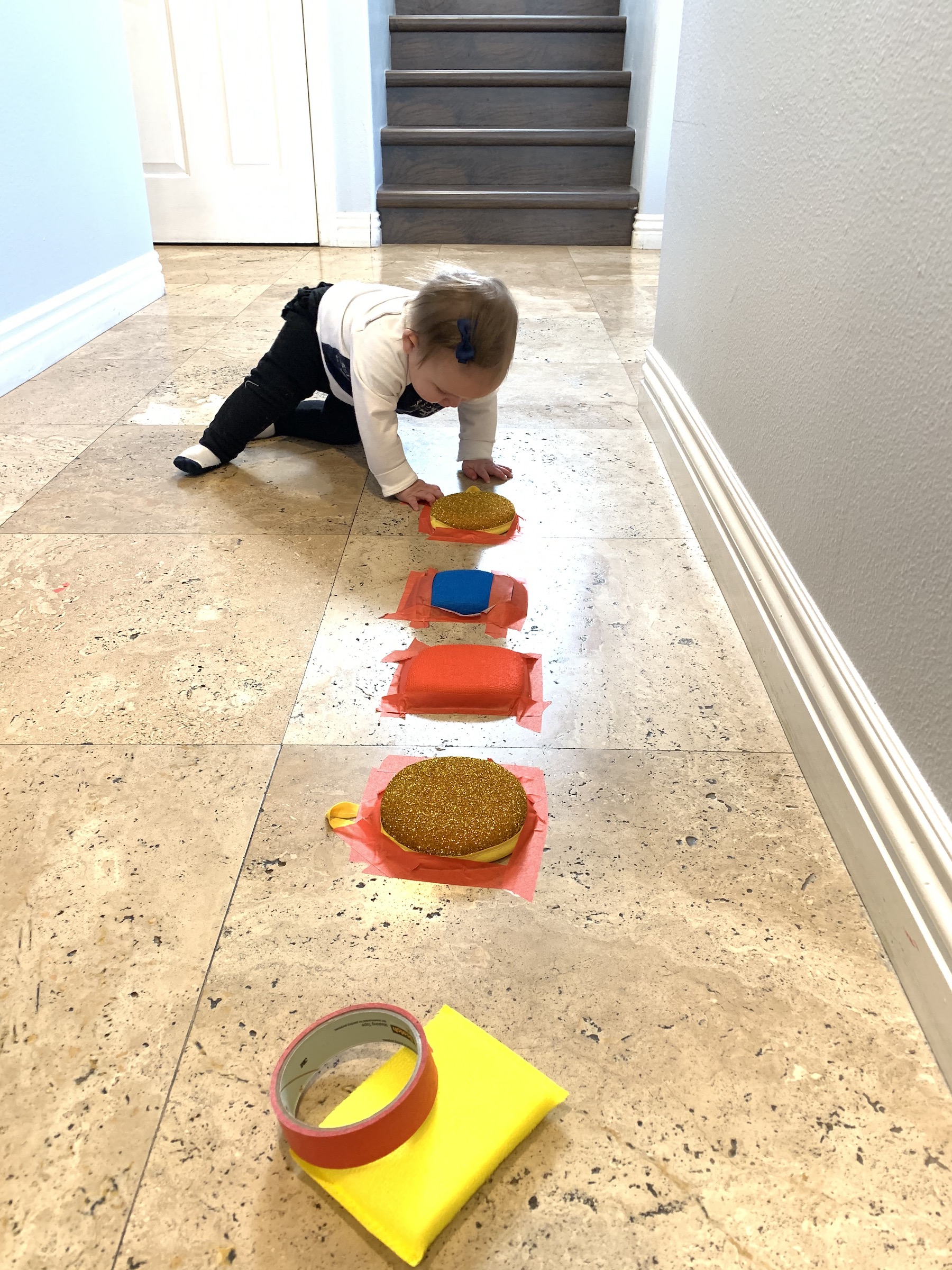
Sponges taped to ground for a crawl path
Loose parts can be used in a variety of ways to encourage crawling, balancing, standing, sitting, reaching, and other gross and fine motor skills.
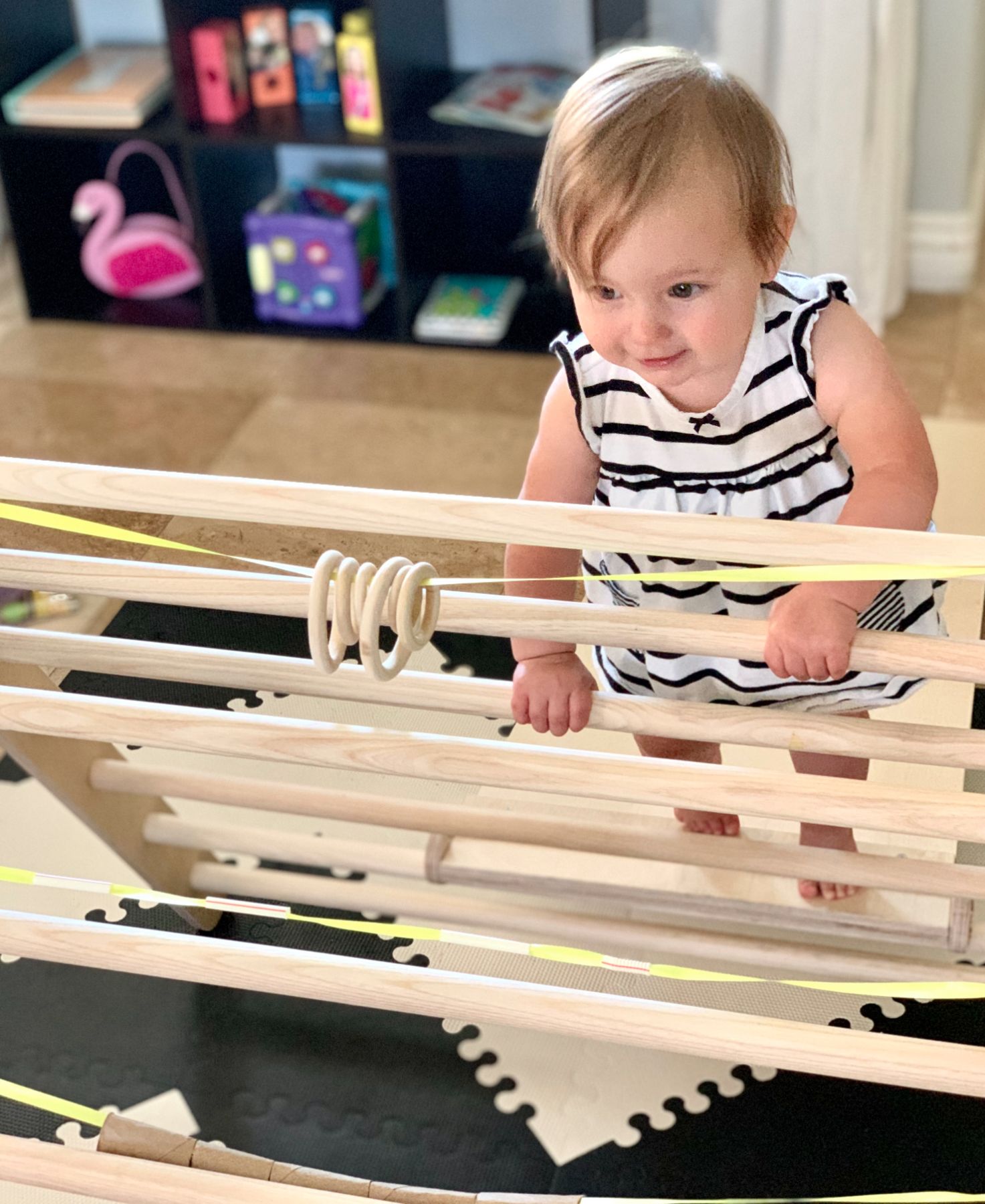
Loose Parts can be added to climbing structures
Adding loose parts to climbing structures, like the pictured Pikler Triangle, can encourage, standing, crawling, balancing, and climbing.
Cognitive Learning
Cognitive learning is not academic ABC’s and 123’s for babies and toddlers, but they are learning valuable cognition even at an early age. Infants and toddlers are learning to predict, reason, question, analyze, and remember.
A great example of cognitive development in infants is object permanence, or understanding that when something is out of sight it still exists. Around 6-8 months, babies develop a sense of object permanence and they begin to look for hidden objects. So many great ways to practice this skill (peekaboo is just one fun example).
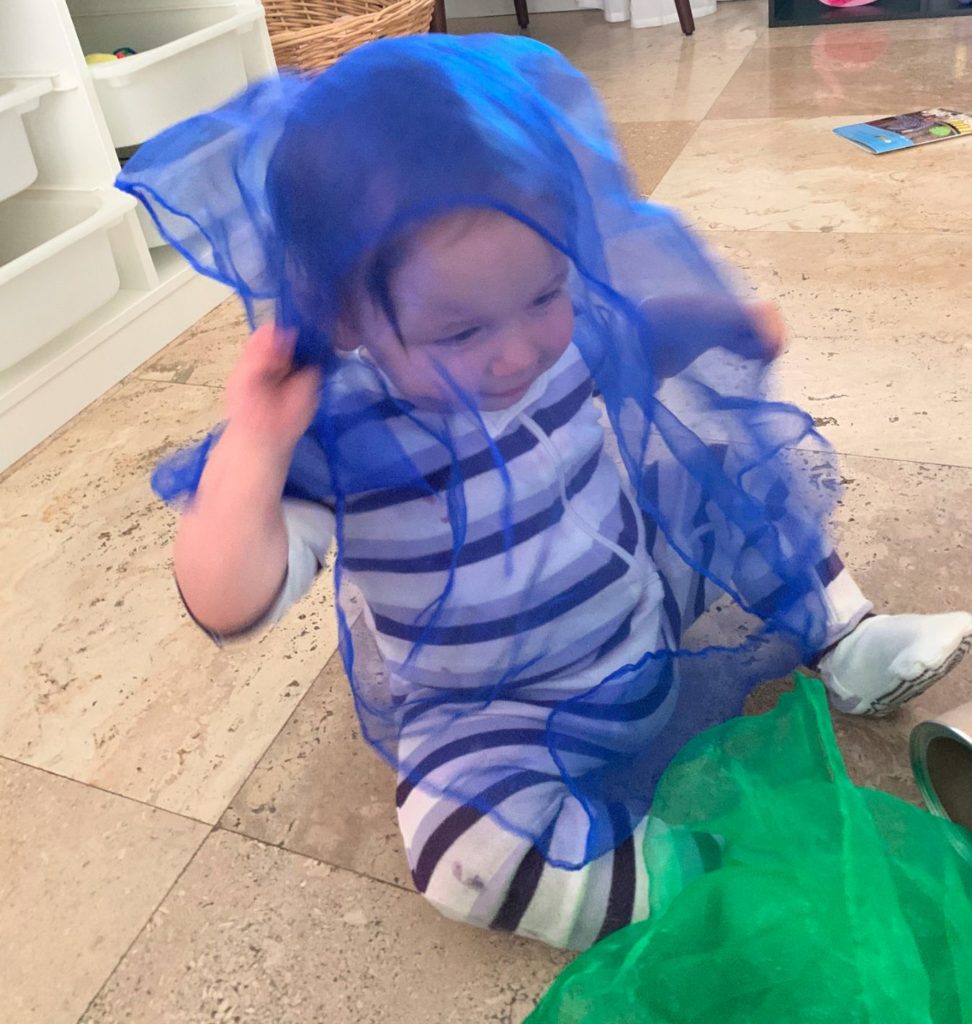
How to introduce loose parts play
0-5 months: From birth you can start practicing tummy time. Tummy time will help strengthen core muscles that allow for sitting and other future skills. Mirrors are a great loose part for this age so they can begin to lift their head to look at themselves. Various textured objects can be given to explore while in the tummy time position.
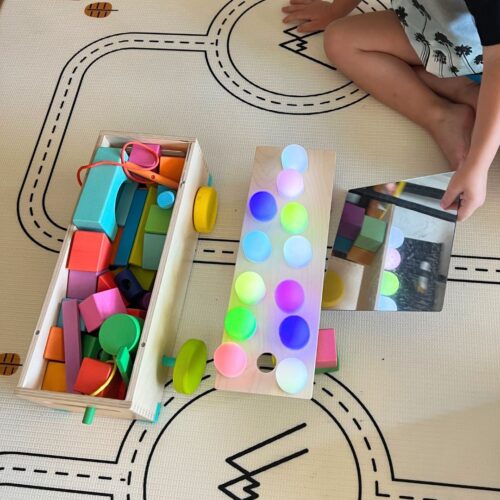
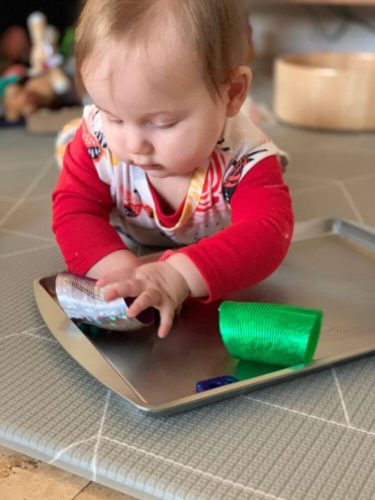
6-12 months: At this age an infant is beginning to sit up. Loose parts can now be incorporated into treasure baskets. Treasure baskets are a fancy way to explain a collection of interesting textures, weights, colors, sizes, and materials of objects. You can create theme baskets or keep them completely random. Follow your child’s interests for more engagement. Infants at this age will take items out, explore through their senses, and possibly put them back in or put them into a given container.
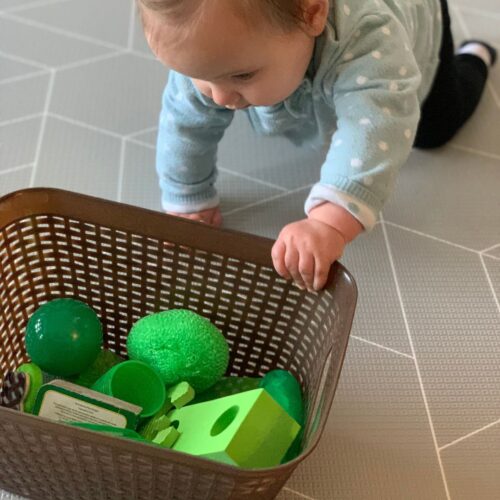
1-2 years: At around 1 year of age, babies begin to walk. Loose parts can now be incorporated into walking and moving. Toddlers love to fill containers and carry them around. This could include shopping carts, push carts, cars, baskets, boxes, and other containers. You may begin to see more intentional heuristic play. Heuristic play is the term given for exploring everyday objects. They may begin to imitate you mixing with a spoon and bowl or drinking a cup of coffee. Offering everyday household objects is important for their imagination and social development during this stage.
Some Examples of loose parts for infants and toddlers
You can see some household objects used as loose parts by going to my post “Household Objects as Toys.”
Other examples of loose parts:
- Paper towel rolls
- Rocks
- Bag of leaves
- Fabric scraps
- Pom poms
- Tape
- Boxes
- Lids
- Spools
- Clothespins
- Sponges (see “10 Ways to Play with Sponges”)
- Slinkies
- Shower rings
- Wooden rings
- Recycled containers
- Various blocks (foam, wooden, magnetic, etc.)
- Cups
- Scoops (measuring cups, spoons, etc.)
- Balls
- Beanbags
- And many more!
If you need some ideas on how to use these items head to my blog post “Loose Parts Play Ideas.”
Check out Etsy.com if you are looking for unique and hand crafted loose parts.
Get even more ideas for loose parts on Amazon.
Did you find this post helpful? What other loose parts do you use with your baby or toddler? Leave a comment below.
Please help support my blogging efforts by sharing this post with someone that may find value in its contents.
Facebook
Pinterest
Email
Print

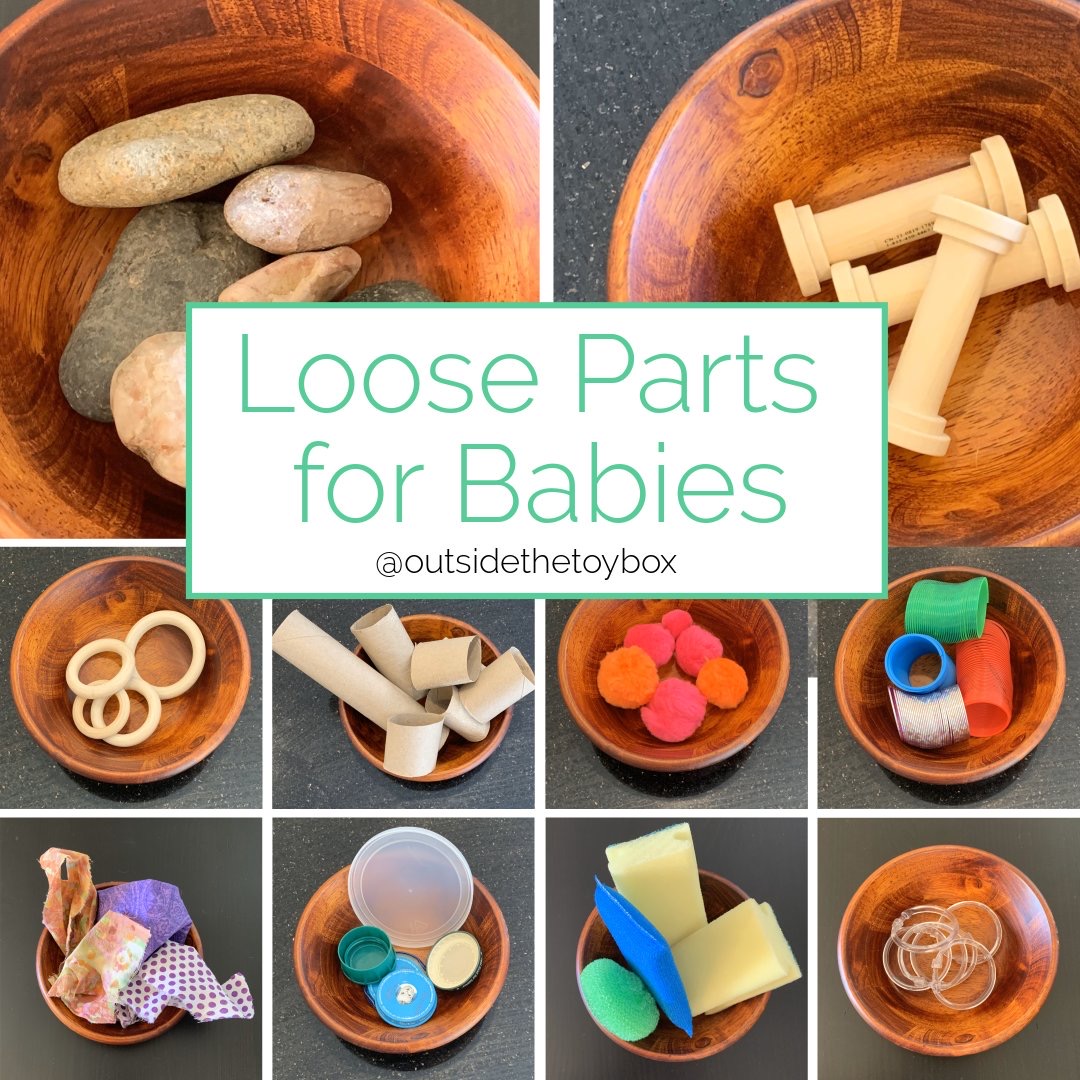
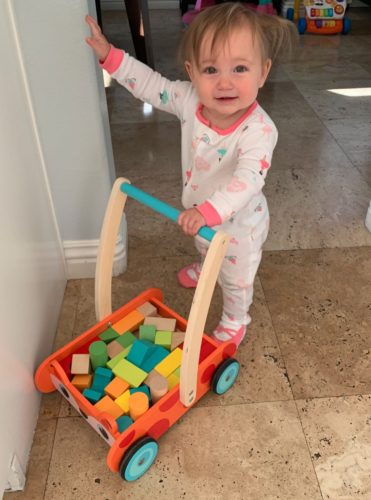
Trackbacks/Pingbacks